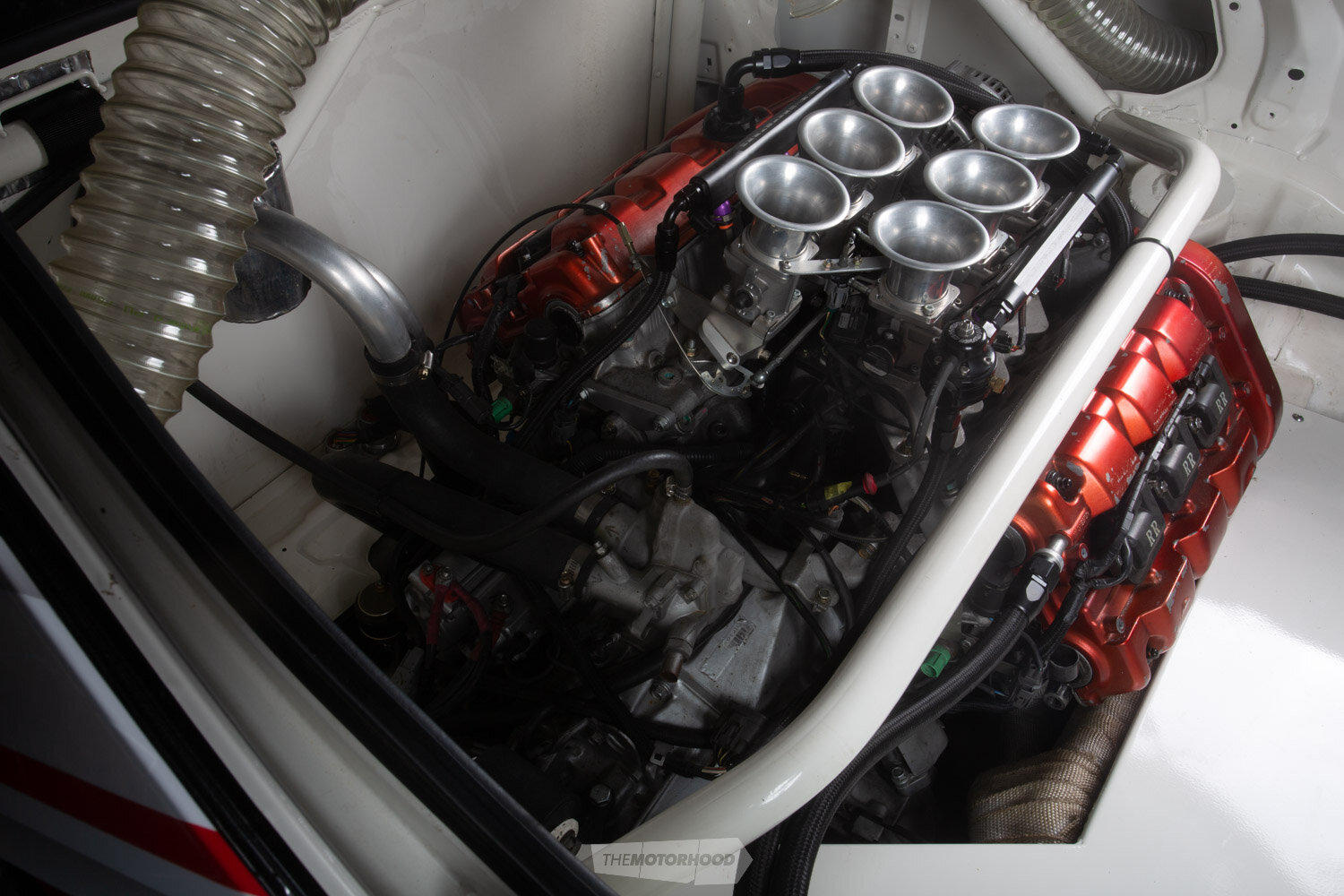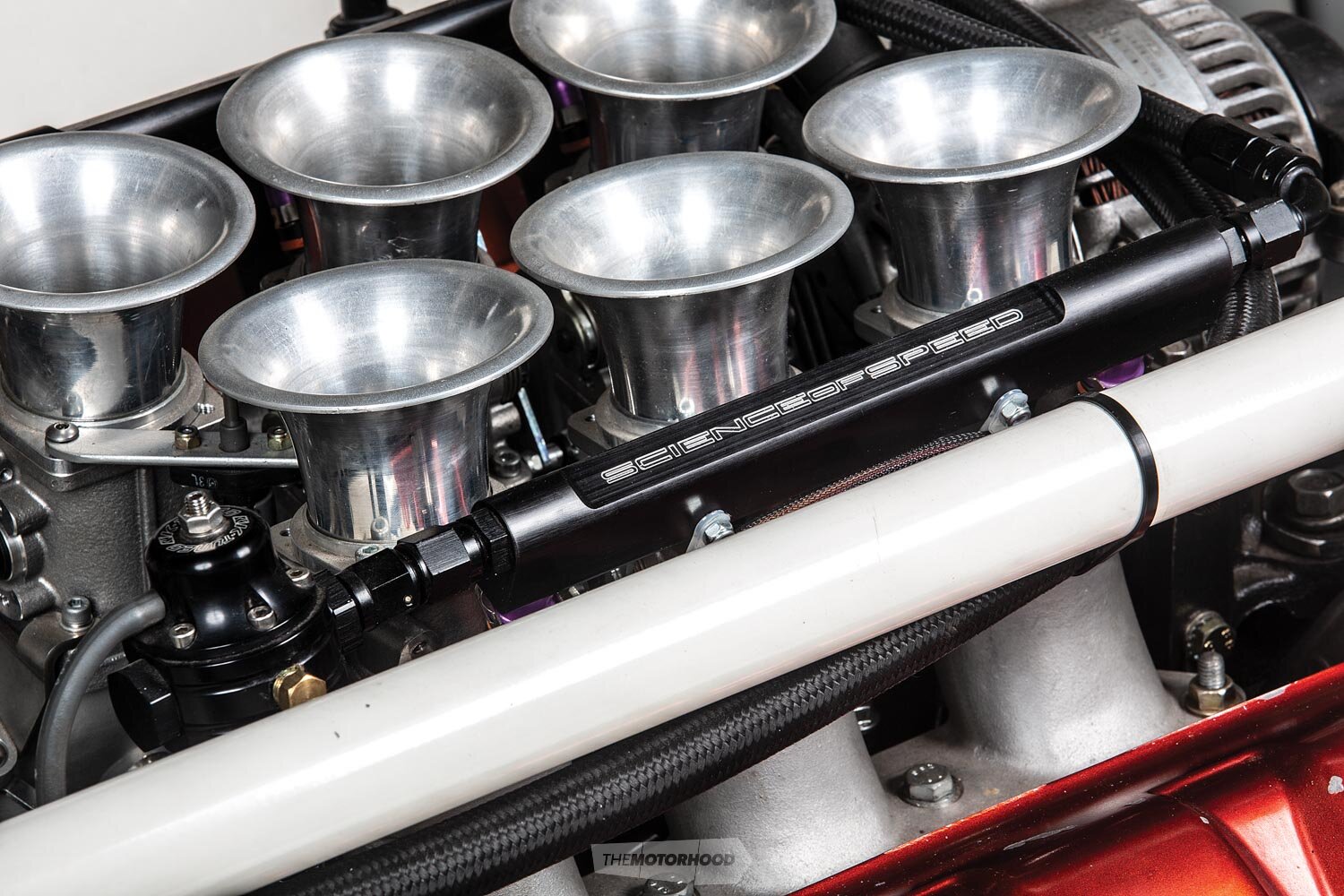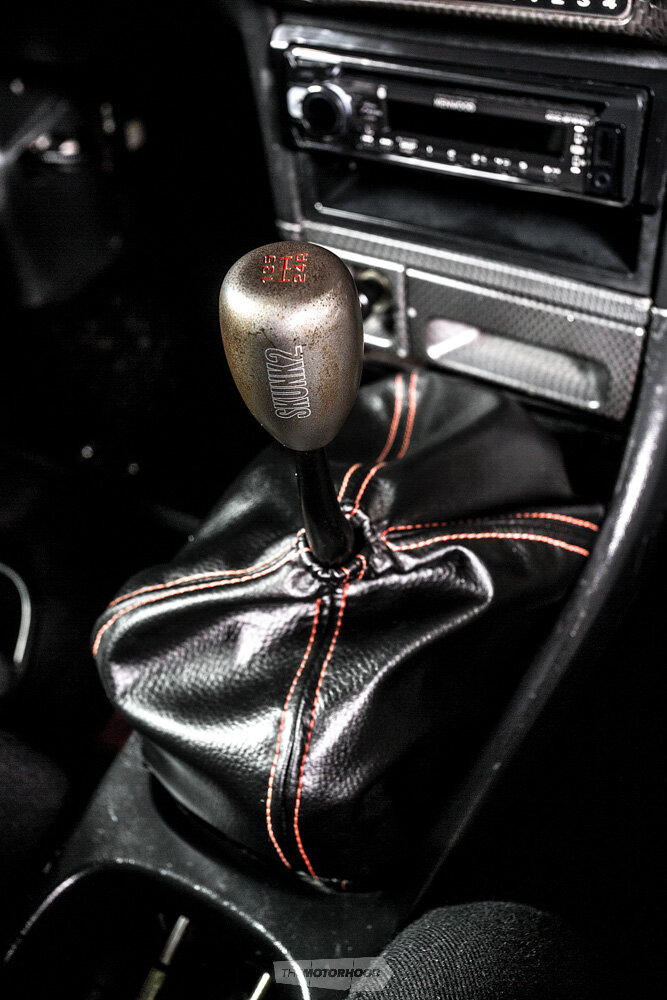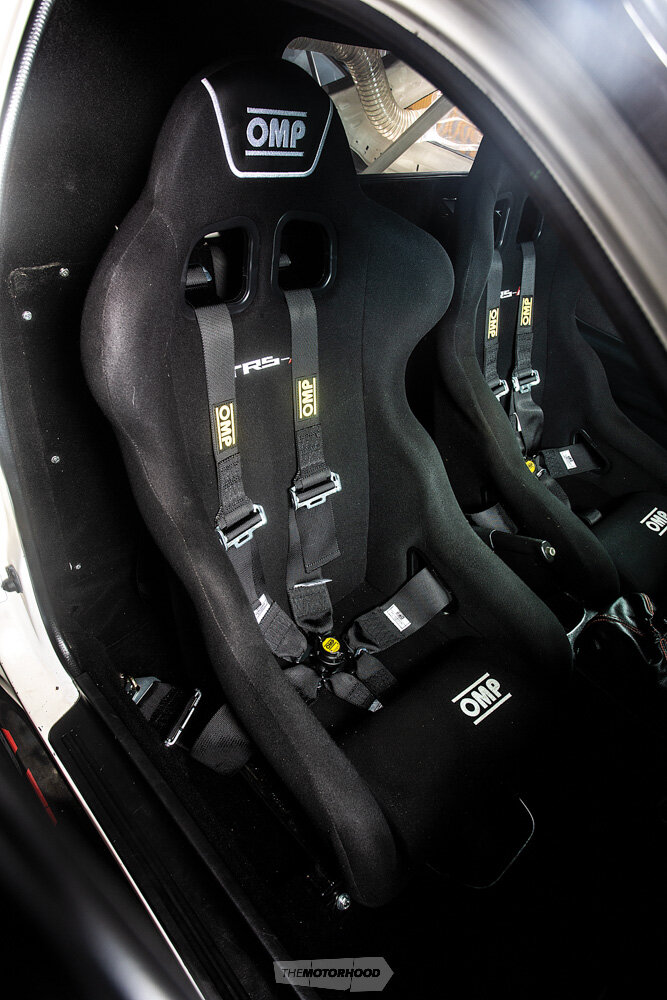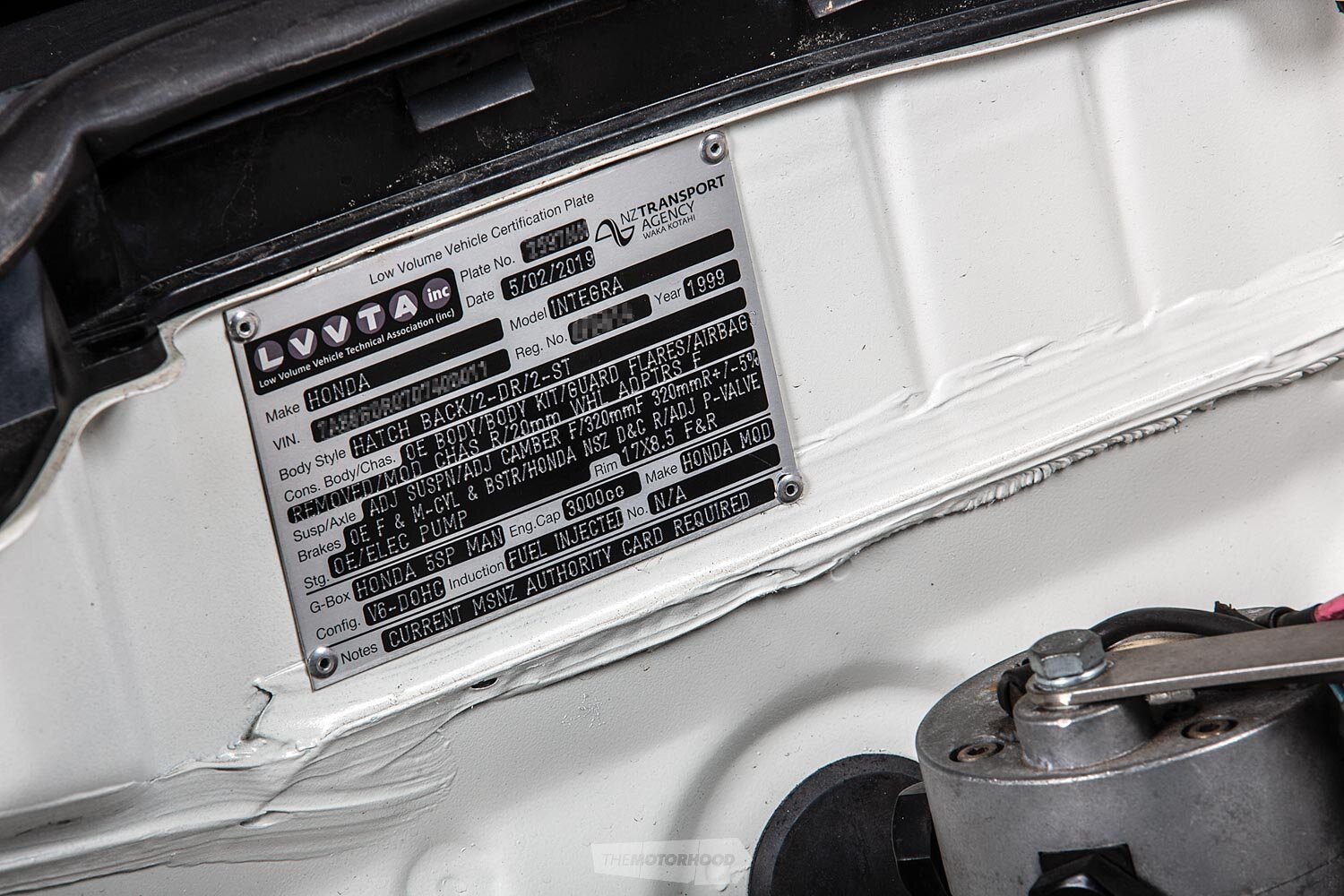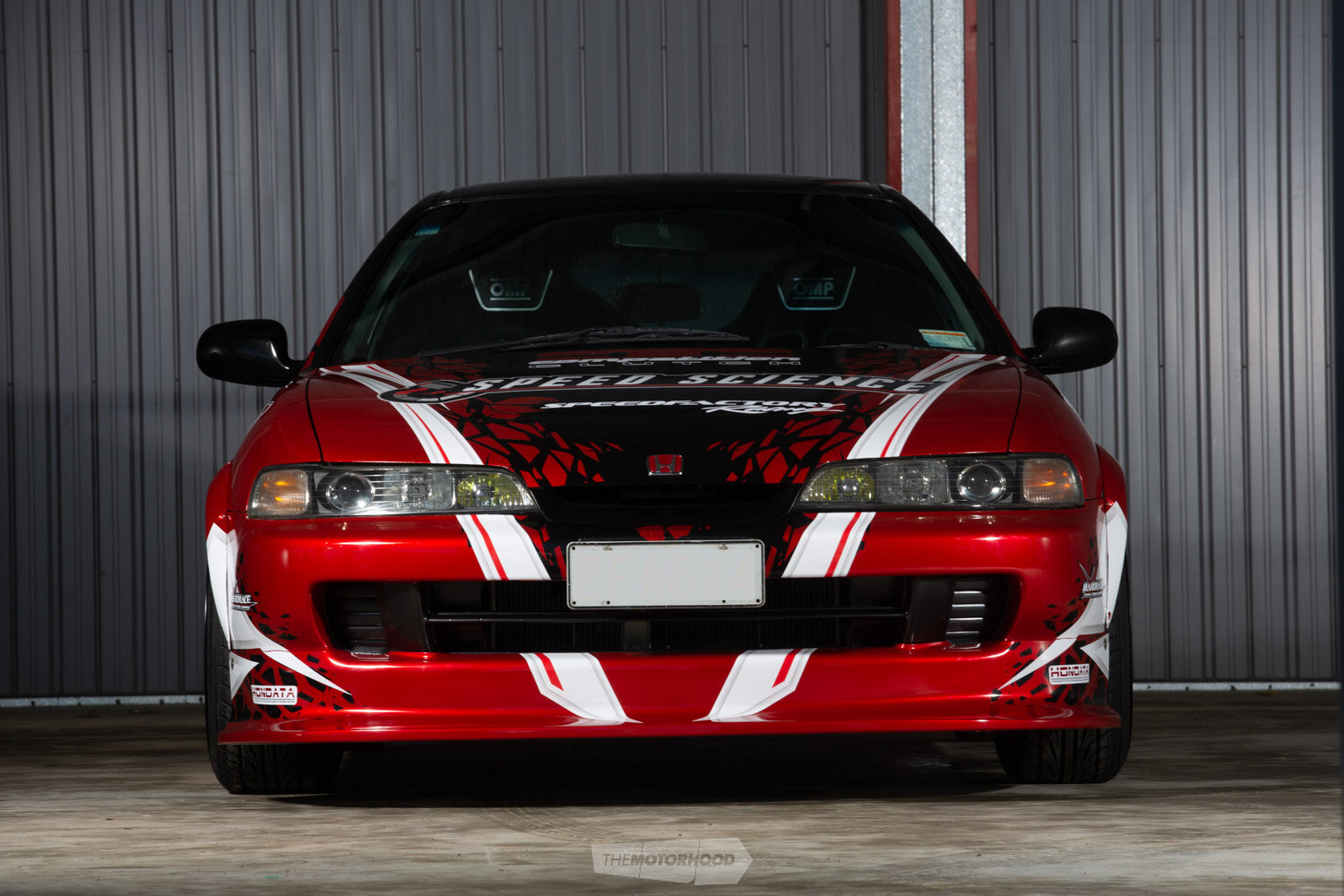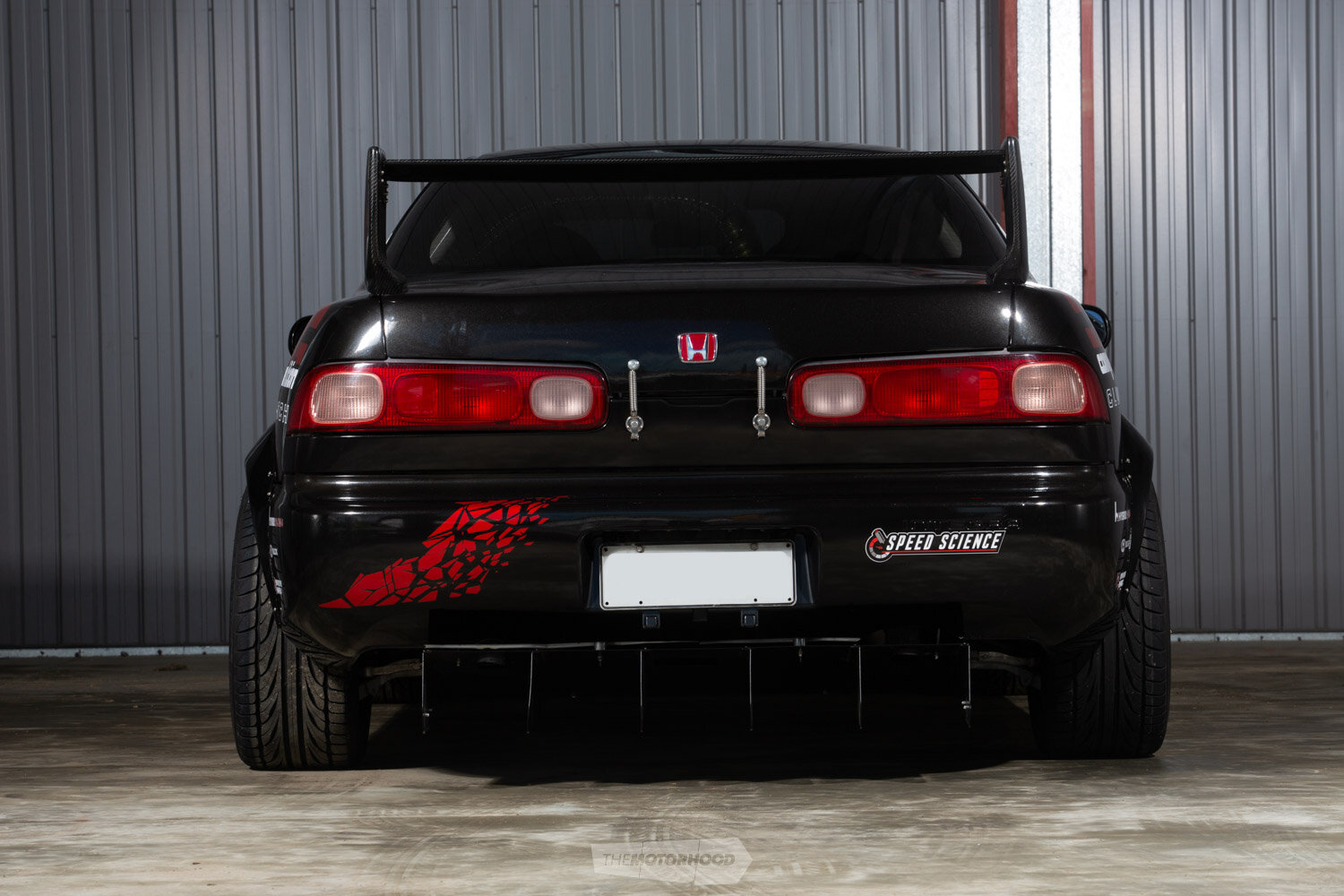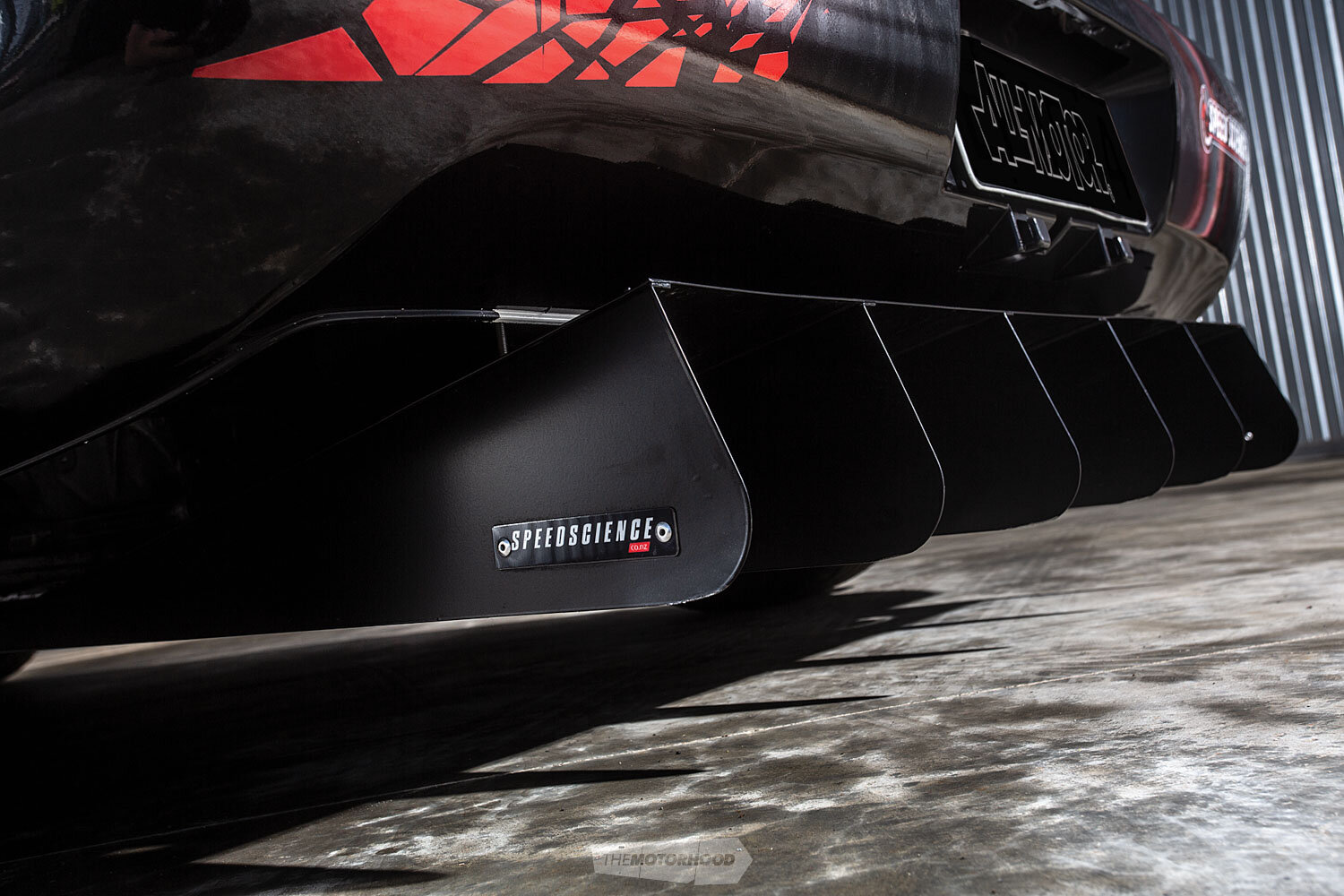Paying homage to the holy grail of Honda’s line-up by mid mounting its running gear into a DC2 Type R!
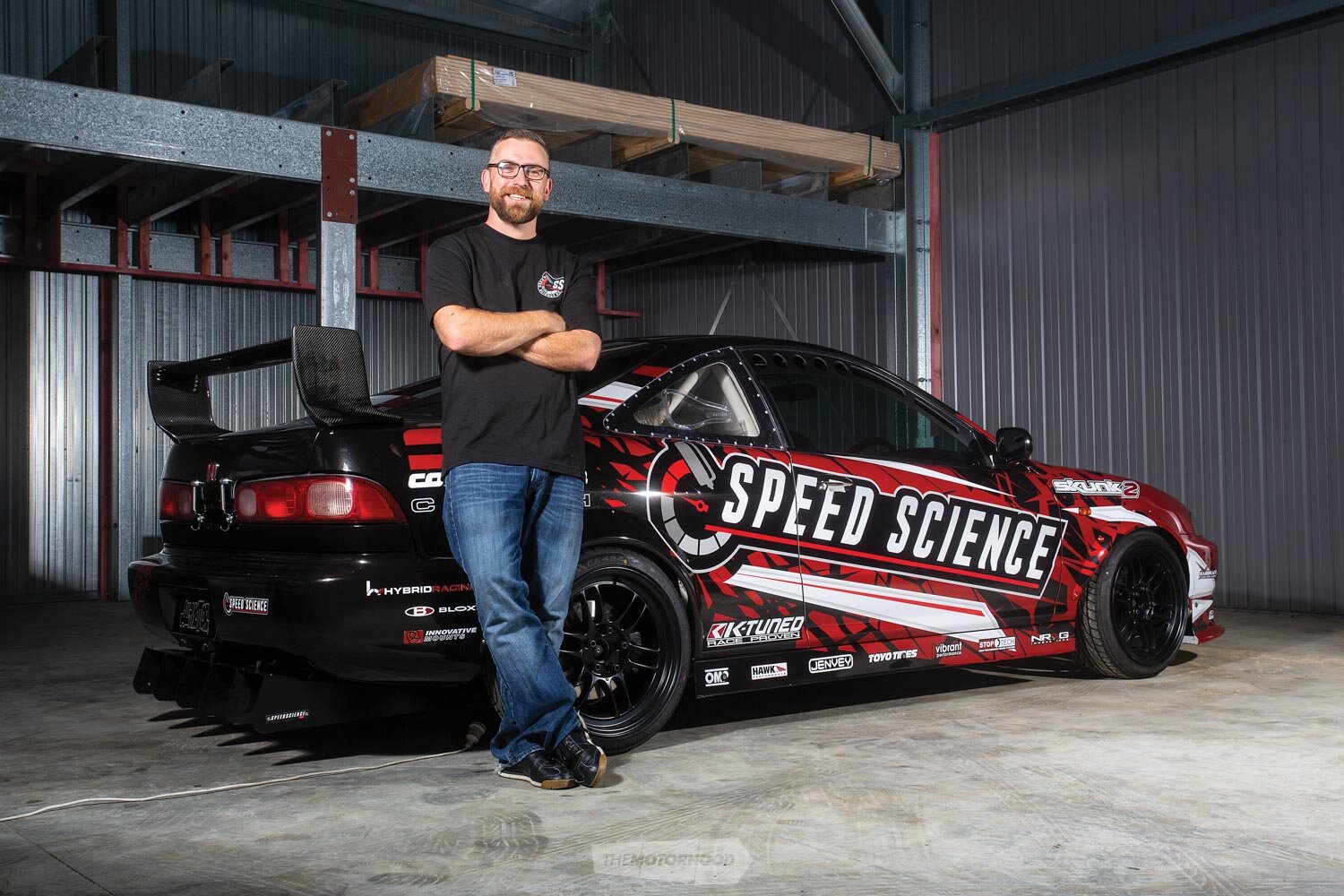
The year is 1949. It’s post-war Japan, and a young engineer by the name of Soichiro has just liquidated his second company for what little money he could salvage out of it, all in pursuit of a better future. All Soichiro had dreamed of since being thrilled as a toddler by the sight of the first car in his village was making a difference in the automotive industry. So, with a handful of funds, the promise of a successful venture to two employees, and a determination to produce quality cars, Soichiro — of the Honda (本田) family — incorporated a little company you may have heard of: Honda Motor Co., Ltd.
Fast forward more than half a century to 2001, and 18-year-old Adam Plews is handing over the majority of a modest pay cheque to own his first example of Soichiro Honda’s legacy: a DC2 Integra. It boasts the coveted B18C power plant, and, more important, it makes use of the variable-timing system on which the company has leveraged its name since the late ’80s — VTEC.
Adam’s story is not unlike Soichiro’s. That particular Integra sparked in Adam an undying love affair with the red H-badge that acted as the catalyst for his ownership of more small-capacity front-wheel-drive noisemakers than can possibly be listed. It even saw him scraping together the funds to start his own company, Speed Science, which specialized in aftermarket performance parts for — you guessed it — Hondas and has since grown to encompass a bit of everything.
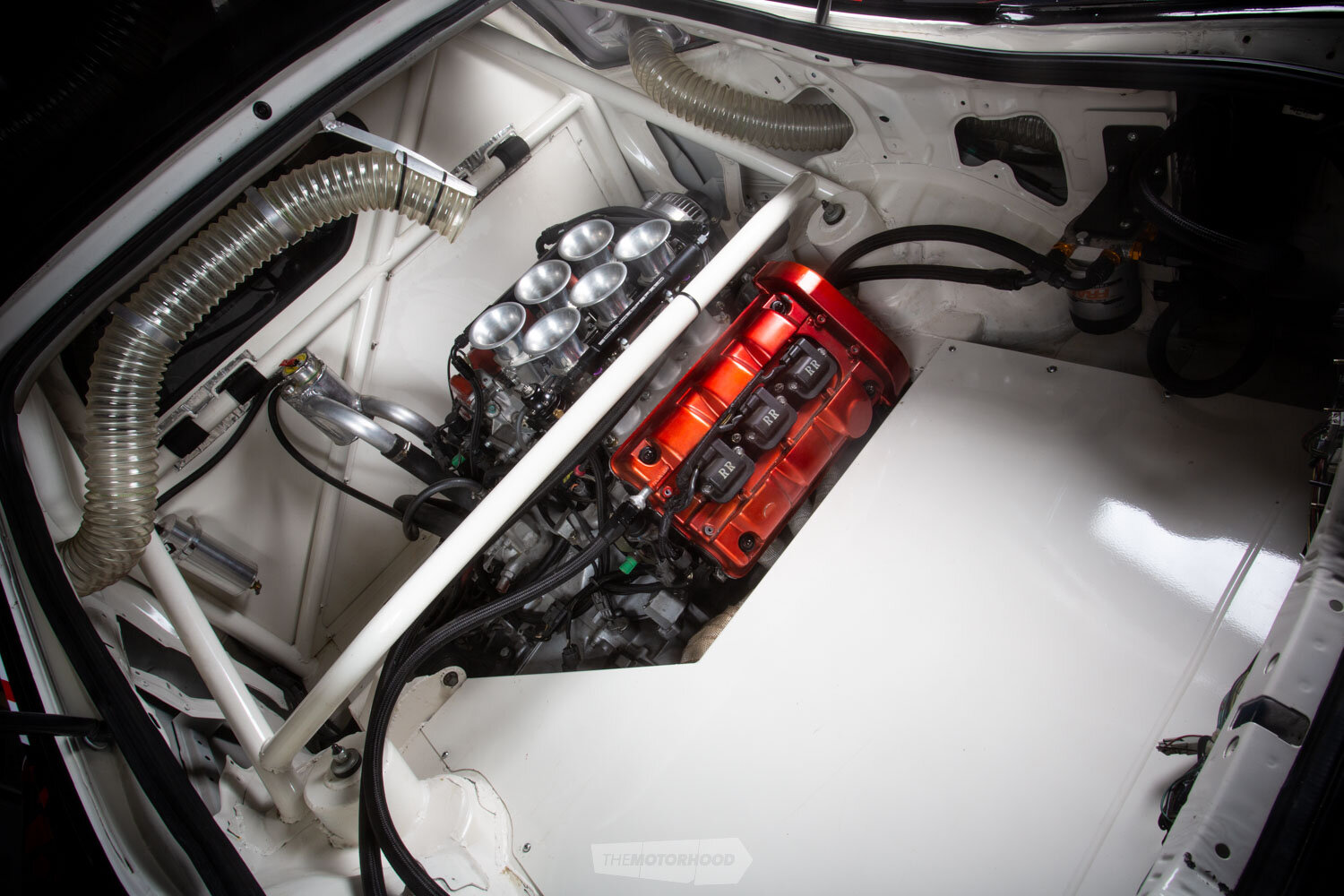
Adam ditched the idea of running a S2000 power train in favour of the mid-mounted NSX examples, which give the Integra a 47–53 rear-biased weight balance that helps put weight over the now-rear-driven wheels — undoubtedly helpful when trying to put down that 190kW of directly driven forward momentum
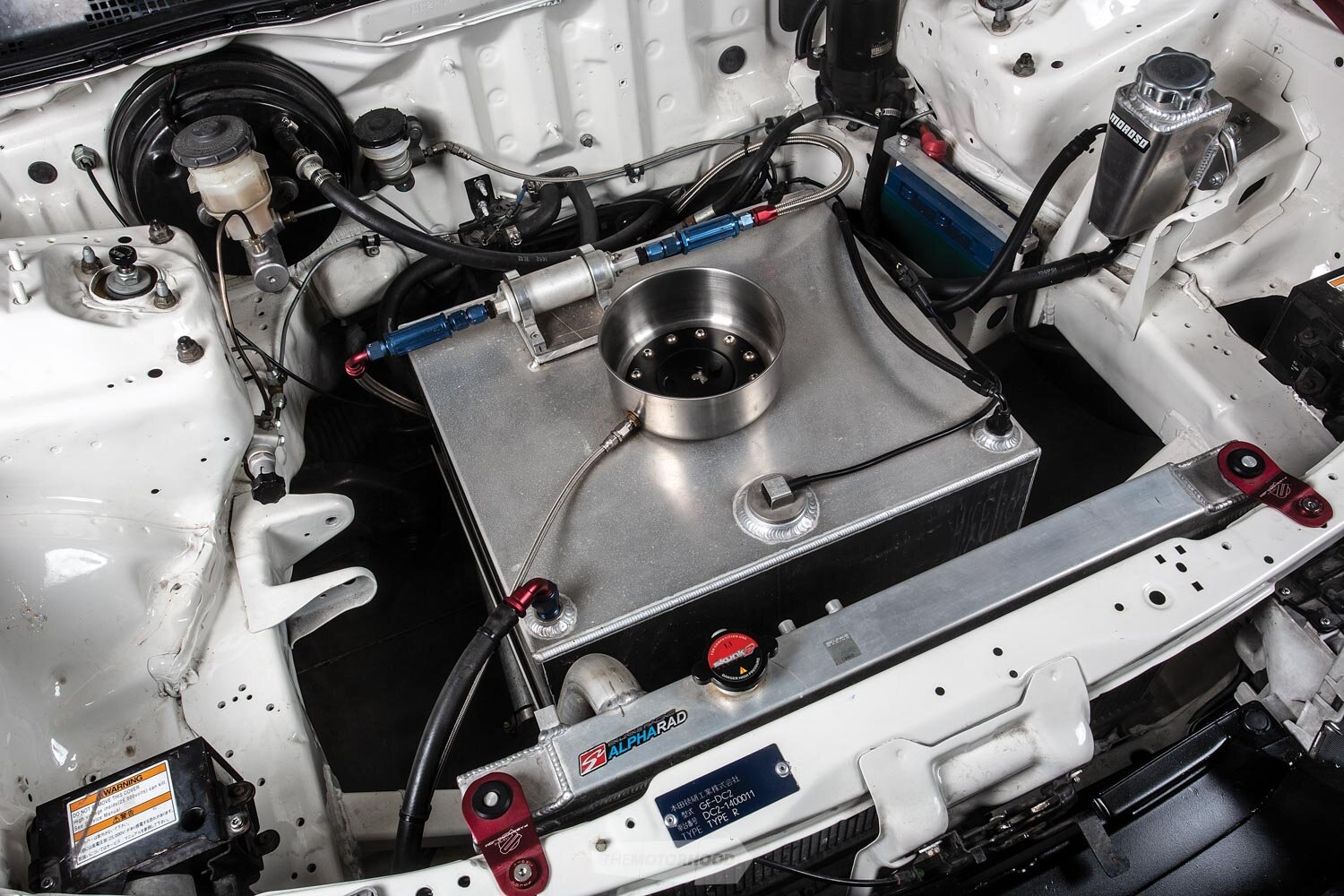
So, it would make sense that when rumours that a monstrous build was under way — one that the whispers hinted would involve taking to Type R steel with a cutting wheel so that it would accept the hulking V6 heart from Honda’s top-tier offering, the NSX, and that all this madness would be mid mounted — Adam’s name would somehow be written all over it. Yes, dear reader, the rumours were true. What you see before you is exactly what you think it is — your eyes aren’t deceiving you; the photos haven’t been ’shopped.
The concept was nothing more than a back-of-the-brain thought for Adam about how he would build the ultimate DC2, something that could be tracked; dragged; taken to shows; and, most important, driven on the road — legally. After spending time deep in the wormhole of internet videos, Adam got the idea of ‘simply’ rear-wheel-drive converting an Integra using S2000 running gear. He got as far as having the F20C and six-speed on a crane ready to be dropped in and an R33 Skyline rear end measured up with the floorpan about to be cut before the opportunity to get his hands on NSX running gear arose. The allure of what he now refers to as a “purist’s build” proved too much, and Adam switched tacks to build the Integra supercar that no one ever had.
“This is what you’d call a ‘purist build’ — paying homage to the NSX. Otherwise, you’d do a mid-mount K-series; it would make far more power. I’d like to do that in future, if the motor blows up, but not yet,” admits Adam
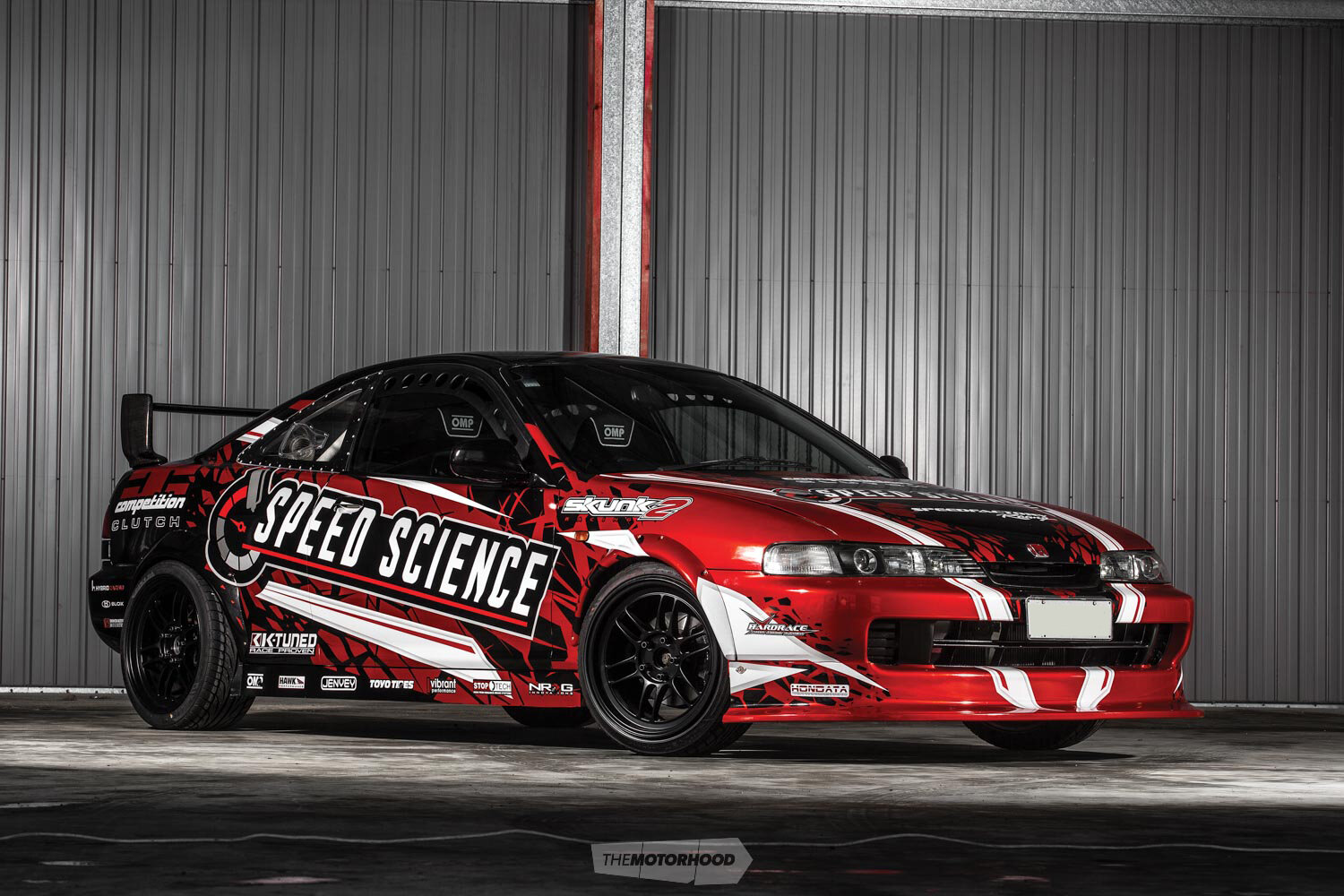
“You ask anyone, and the answer is always going to be that the NSX is the ultimate Honda,” explains Adam. “Switching to that running gear versus the original plan with the S2000 stuff just felt right. It also meant that there was actually less work involved.”
“Less work” would mean only slightly less time spent working up front, where rods and pistons have been traded in for a fuel cell and electric power steering. That nose weight has been transferred rearwards to where the back seats would usually be found. It is now in its own sealed compartment courtesy of a custom firewall that separates it from the two-seat cabin, with the floorpan cut out to make room.
Moving to the mid-mounted configuration meant that, instead of going down the route of having to develop a functional rear end using a mix of Nissan and Honda pieces, Adam was able to repurpose a complete NSX subframe that acts as the platform of the C30A and five-speed combo and the axles, hubs, and arms are all NSX units — even the NSX sway bar has been ported over.
It’s as close to being a bolt-in package as putting an NSX heart in an Integra can be, a credit to Kevin Hunt at Redline Enterprises, who was charged with the hard task of making it all actually work. The chassis rails were boxed for strength, and Kevin crafted the new subframe mounting points, integrating custom engine and gearbox mounting points on the Integra that pick up from the factory NSX positions. He has also realigned the seriously out-of-place suspension geometry that the combination generated using a pair of custom rear strut towers that now accept QA1 coilovers. The NSX rear track pumps the Integra out by a good 150mm. Adam tells us that, with that weight now positioned rearwards, the car has 47–53 weight balance biased to the rear wheels — a handy side effect considering that drive is delivered almost directly to the hubs in contrast to a traditional rear-wheel-drive chassis.
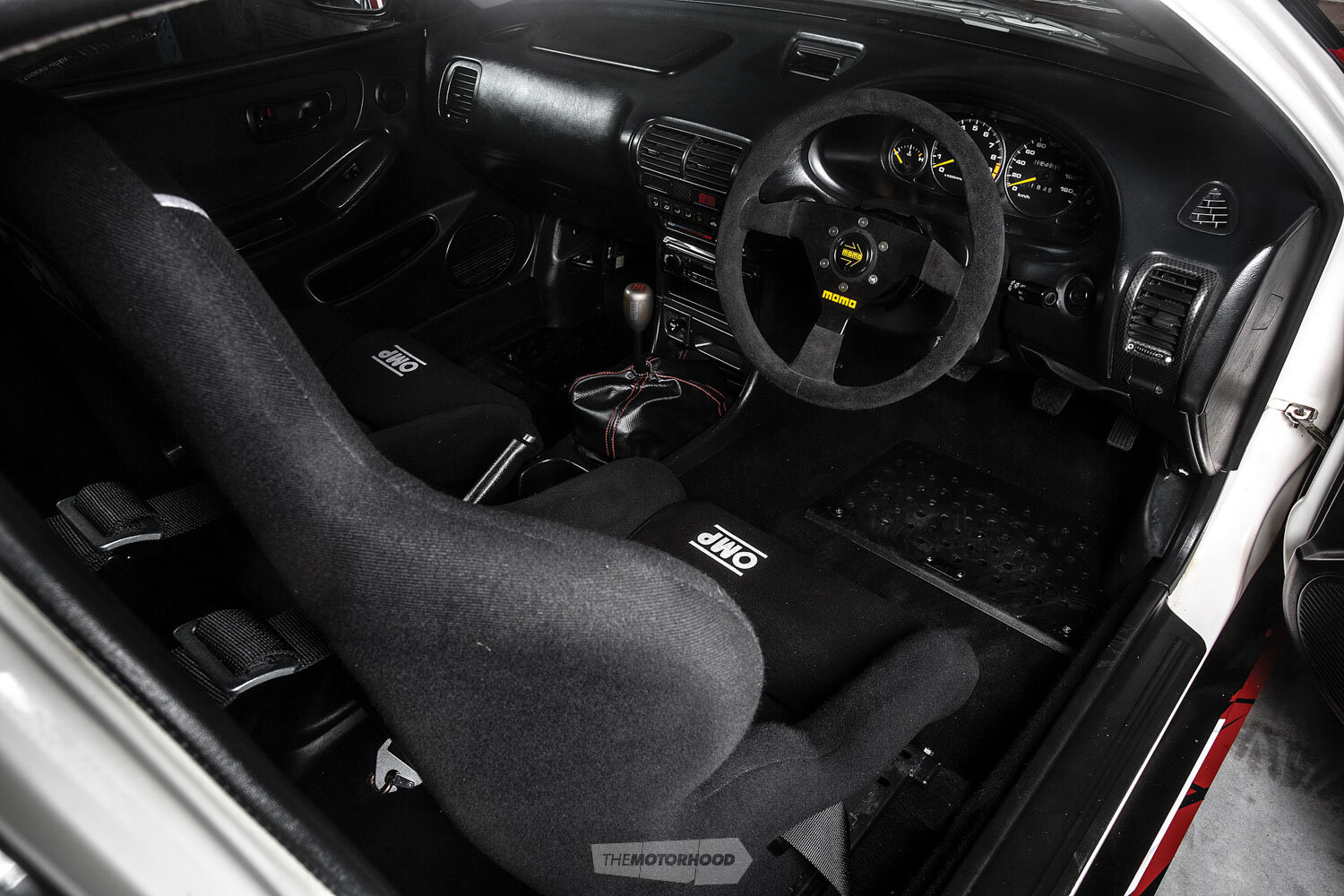
Inside the cabin, you’ll still find a functioning sound system, a heater that blows hot, and that the steering rack is powered. It’s a functional street-legal car intended to be driven regularly — not some trailer queen — and it has all the comforts to suit
The forward-motivator itself, a C30A from the early first-generation NSX, is the second to have graced the Integra. The first incarnation — the low-kilometre unit that initially tempted Adam into the project — developed an oiling issue in the top end while on the dyno and halted all supply to the cams. The motor was a total loss in the end, but, after a few bits of French were muttered in the corner of the workshop and the budget amended to accommodate it, a second unit was sourced, and this is what now provides drive to the rear wheels. It makes use of a simple intake and exhaust package that sees the internals go untouched. The idea here wasn’t to chase outright power; it’s naturally aspirated (NA), after all, and, with the plan being to be able to happily pedal it through the daily commute, an angry lump of a monster was illogical.
Don’t make the mistake of thinking it’s tame, though; it isn’t. The rasp of the custom four-into-one headers either side and the twin short 2.25-inch exhaust that radiates through the Vibrant Performance mufflers is hearty. It’s a bark that will send small children running at the blip of the accelerator. Despite not being able to hear the rush of air going through the ScienceofSpeed/Jenvey individual throttle bodies (ITBs) from the outside, when you’re strapped in the cabin, you can almost feel the suction of those gaping trumpets pulling you in, and the deep dort emitted makes sure that you know you’re sitting only millimetres away.
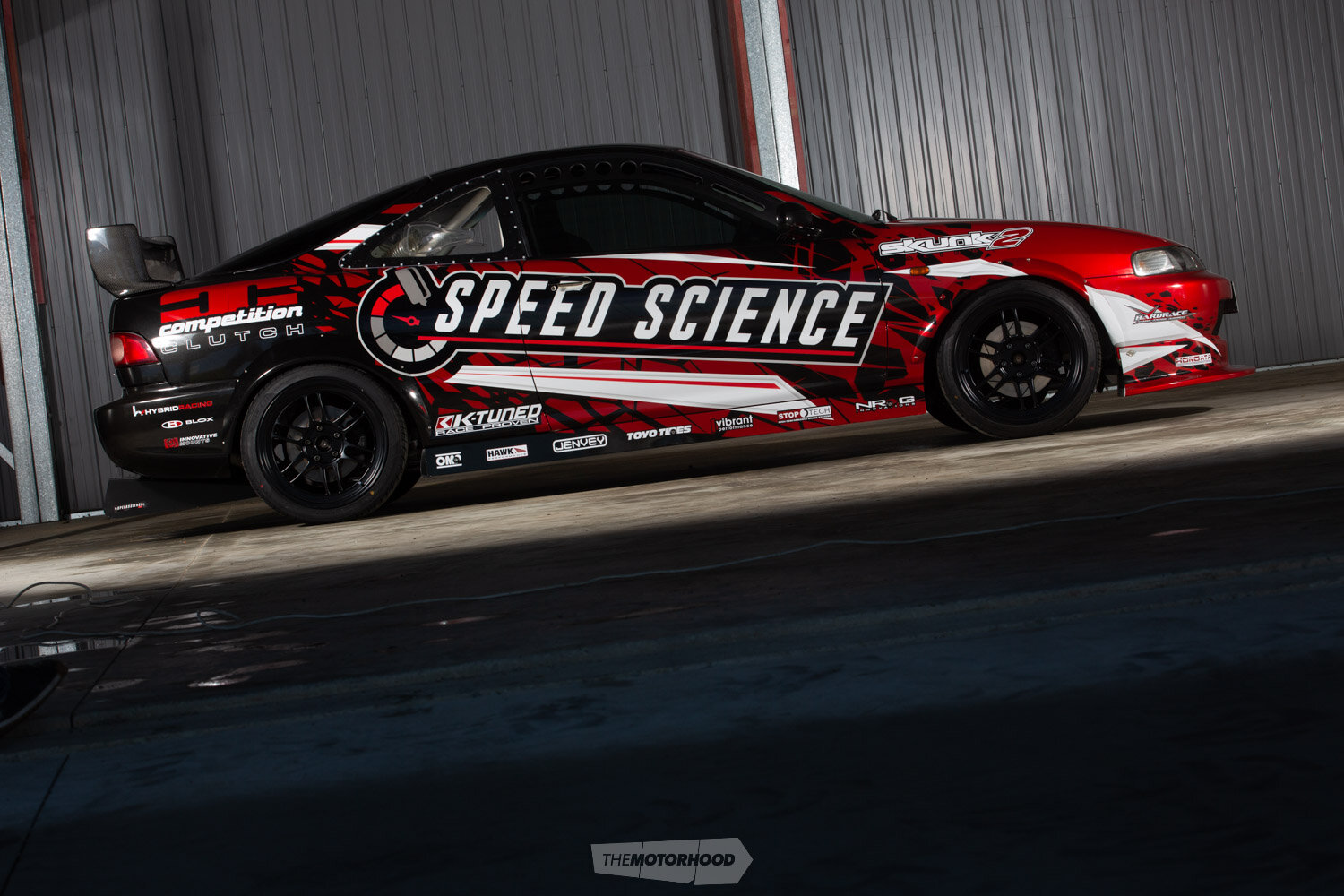
It’s not only betterment in the name of performance, either; gazing through the rear hatch glass down the barrel of six ITB trumpets is a real pleasure, one that would have otherwise been dampened by the big bulky factory unit typically found on the C30A, as Adam puts it.
The package is 190kW of pure motor that produces a ton of torque — the kind that the previous B18C simply did not have a chance of matching. It’s not only more powerful than a factory NSX; it’s far lighter too, and, as this is the first rear-wheel-drive car that Adam has owned, it’s a learning curve for him not to mash the loud pedal prematurely on account of the risk of having the rears light up as he fishtails down the road in a futile attempt to refind grip.
That potential battleground for grip, the New Zealand public roadway, was a very deliberate choice. It’s the reason why everything was done by the book. Adam made sure that the Integra would get the green light from the Low Volume Vehicle Technical Association (LVVTA) at the conclusion; otherwise, by his own admission, he would never drive the car, and he didn’t want an excuse for that to happen.
That’s the reason why, when opening the doors and climbing into the welcoming OMP TRS-E bucket seats, the now-reduced cabin almost feels as though you’re stepping into a modern-day Integra.
Adam tells us, “I was determined that it would feel like a street car on the inside” — and it does. Sure, there are hints at what the car is really about, such as the footwell plates and the Momo steering wheel, which is removed with the click of the quick-release hub, but, with subtle touches such as the carpeted rear firewall and the custom shifter boot that hides the NSX shifter, alongside the retention of the factory dash and door cards complete with 6.5-inch components and tweeters, you’d be forgiven for thinking that it is a modified street car that simply sees the occasional stint on track.
For Adam, it’s the ultimate integration of what there is to love about both chassis. The fact that it’s not built for any given discipline means that you can hit the track one day, the drag strip the next, and take it for ice cream on Sunday, all back-to-back without the need to change a thing. It embodies the ethos that the red H-badge represents — a true driver’s car — and is a creation that undoubtedly even Soichiro Honda himself would smile at. Now all that’s left to do is to find out where its limits are, at the business end of 8000rpm!
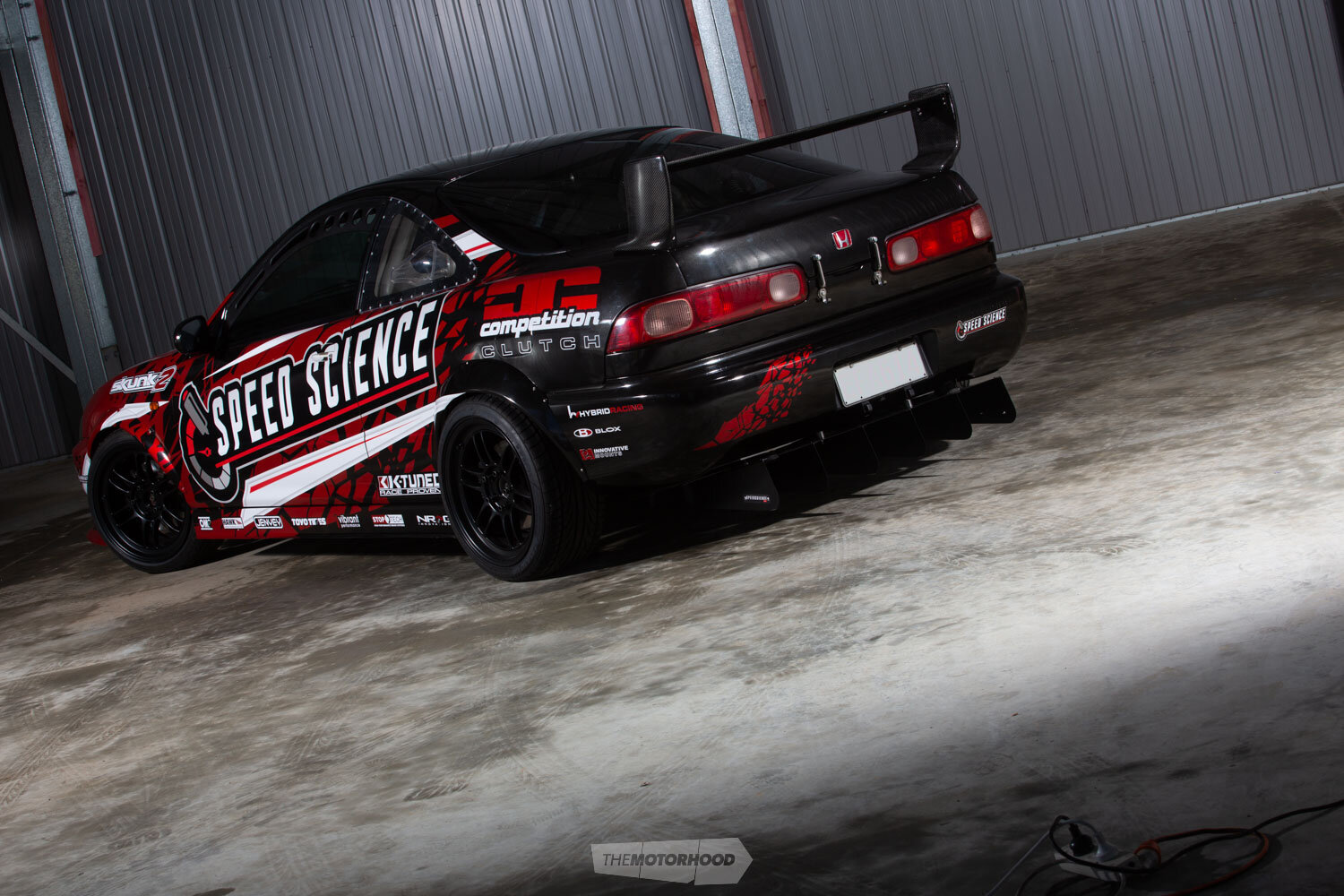
Adam Plews
AGE: 36
LOCATION: Auckland
OCCUPATION: Owner, Speed Science
BUILD TIME: Six years
LENGTH OF OWNERSHIP: Six years
THANKS: Kevin Hunt at Redline Enterprises; Cody Gibbs; Jason Gibbs at Zoom; Kane Wilson at Nationwide Accessories; Grant at GT Refinishers; NZHondas; All Motor Group; Glenn Suckling at GDS Automotive; Simon, for sourcing the running gear; and Scott Ballie, for wiring

1999 Honda Integra Type R (DC2)
Heart
ENGINE: Honda NSX C30A, 2977cc, V6
BLOCK: Factory
HEAD: Factory
INTAKE: ScienceofSpeed/Jenvey ITBs
EXHAUST: Custom headers, twin 2.25-inch exhaust, Vibrant Performance mufflers
FUEL: Walbro fuel pump, Injector Dynamics 750cc injectors, K-Tuned fuel-pressure regulator (FPR), Vibrant Performance AN fittings, Vibrant Performance braided hose, ScienceofSpeed billet fuel rails, front-mounted fuel cell
IGNITION: Factory
ECU: Link G4+
COOLING: Skunk2 alloy radiator, twin 12-inch electric fans, custom rear-mounted oil cooler, GReddy thermostatic remote oil-filter mount, Moroso coolant overflow tank
EXTRA: Custom oil catch-can
Driveline
GEARBOX: NSX five-speed manual
CLUTCH: ScienceofSpeed 275
FLYWHEEL: ScienceofSpeed 275
|DIFF: Factory limited-slip
Support
STRUTS: (F) Modified Yellow Speed Racing coilovers, (R) QA1 double-adjustable coilovers
BRAKES: (F) ’98-spec Type R calipers, Hawk HP+ pads, Stoptech Power Slot rotors; (R) NSX calipers, Hawk HP+ pads, Stoptech Power Slot rotors
EXTRA: Modified rear chassis, custom rear strut towers, NSX rear sway bar, Hardrace suspension bushes, Skunk2 front camber arms, MR2 electric power-steering pump, Moroso power-steering reservoir
Shoes
WHEELS: 17×9-inch (+35) Enkei RPF1
TYRES: (F) 215/40R17 Toyo, (R) 245/40R17 Toyo
Exterior
PAINT: Custom wrap designed by Mark at Pixelsaurus, applied by Jason at Zoom
ENHANCEMENTS: HC Racing carbon-fibre rear spoiler, Speed Science custom front splitter, PCI side skirts, Speed Science rear diffuser, Top 1 Motors window vents
Interior
SEATS: OMP TRS-E, OMP five-point harness
STEERING WHEEL: Momo
INSTRUMENTATION: Custom cluster-mounted shift light
Performance
POWER: 190kW
FUEL: 98 octane
TUNER: Glenn Suckling at GDS Automotive





